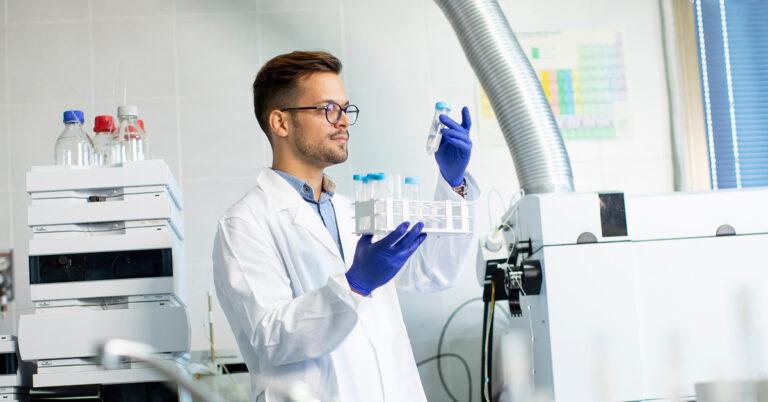
In the pharmaceutical world, researchers rely heavily on high-performance liquid chromatography (HPLC) to confirm they are sending out products that will be safe for consumption. Two methods they can use are normal- and reverse-phase HPLC. Each has its own unique applications and advantages. Exploring a brief comparison of the two can help you choose the appropriate technique for your specific requirements.
What Happens During Normal-Phase HPLC?
When researchers use normal-phase HPLC, they take an analyte and pass it through a column. During its journey, the compound moves in a mobile phase through a non-polar solvent like n-hexane.
Once it exits this phase, it enters a stationary one that typically features silica molecules. If the molecules in the compound are polar—meaning they have both negative and positive charges—they will connect with the polar silica molecules. The non-polar molecules—which have equal charges—will move on through.
What Occurs During Reverse-Phase HPLC?
The more commonly used of the two processes, reverse-phase HPLC, involves a process that embodies its namesake and is based on hydrophobicity. In this case, the phase solvents usually consist of water and an organic solvent.
But instead of the compound encountering polar molecules as it passes through the column during the stationary phase, it encounters non-polar ones. Typically, researchers will use silica particles modified with alkyl chains, such as C18. In this setup, non-polar compounds in the sample bond with silica particles, resulting in longer retention times. Polar compounds, which prefer the polar mobile phase, elute faster.
When Should I Use Normal-Phase HPLC?
After learning the differences between reverse- and normal-phase HPLC, you may wonder which you should use in your work. Normal-phase HPLC is best suited for separating analytes that do not easily dissolve in aqueous solvents. It is also favored in scenarios where the compounds of interest are sensitive to the aqueous mobile phases used in reverse-phase HPLC.
What Are the Advantages of Reverse-Phase HPLC?
Reverse-phase HPLC offers several key advantages that make it a preferred choice in many analytical laboratories. It allows for the separation of a wide variety of compounds, making it suitable for complex mixtures commonly encountered in pharmaceutical research. It is also less expensive to perform than other methods and provides high reproducibility and resolution, which is essential for rigorous analytical applications and regulatory compliance in drug development processes.
Now that you know about each method and its advantages, you can decide which better suits the needs of your research. However, if you need a reliable provider of HPLC services who can help you determine the radiochemical purity of your compounds, contact Moravek today. Our team has extensive experience performing these tests for our clients and follows US Pharmacopeia standards.
